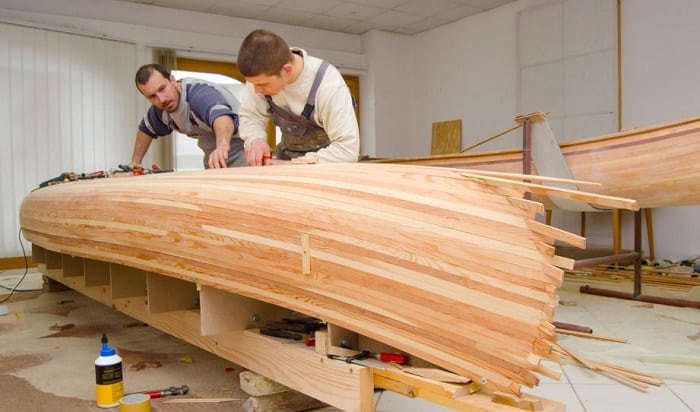
Beyond the Plans: Unveiling Hidden Gems in Wooden Boat Building
Building a wooden boat is a journey of skill, patience, and a deep connection with the craft. While numerous guides exist on the technical aspects, "How to Make a Wooden Boat for Maximum Comfort and Versatility" (let's call it HTMWB) and similar texts often miss the nuances that separate a good boat from a truly exceptional one. This review delves into those often-overlooked details, framing them through a series of questions and answers, drawing on both established boat-building wisdom and emerging trends.
The Unsung Heroes of Boat Comfort: Beyond the Obvious
Most books focus on hull design and construction. But what about the subtle elements that dramatically impact comfort and usability? Let's explore.
Q: How can I incorporate ergonomic principles into my boat design, beyond just seating?
A: HTMWB touches on seating, but rarely delves into the overall ergonomics. Consider these factors, often overlooked:
- Reach and Dexterity: The placement of oars, sail controls, and storage should be optimized for ease of access and movement, considering different body types and postures. Recent research in human factors engineering (e.g., studies on workspace design in manufacturing) offers valuable insights.
- Vibration Dampening: Engine vibration or wave impact can be significantly reduced with strategic material choices and construction techniques. Using composite materials in key areas or incorporating vibration-absorbing mounts for engines is rarely discussed.
- Sun and Weather Protection: Beyond a simple canopy, consider integrated sunshades, strategically placed ventilation for air circulation, and materials with UV resistance to enhance long-term comfort.
Q: How can I maximize storage without sacrificing structural integrity or aesthetics?
A: Storage solutions in wooden boats often feel like an afterthought. Think creatively:
- Customizable Built-in Storage: Integrate storage solutions during the initial design phase, crafting bespoke compartments that fit precisely into the boat's structure. This is far more efficient than adding bulky boxes later.
- Utilizing Hidden Spaces: Explore opportunities within the hull, seats, and gunwales for clever hidden storage, maximizing space utilization and improving aesthetics.
- Modular Storage Systems: Employ removable or adjustable shelving and storage units to adapt to changing needs.
Versatility: Designing for Adaptability
A truly versatile boat can adapt to different activities and conditions. HTMWB mentions versatility, but lacks depth.
Q: How can I design a boat that’s easily adaptable for fishing, sailing, and general recreation?
A: This requires careful planning:
- Modular Design: Consider detachable components, like fishing rod holders, sail mounts, or even removable seating arrangements, to cater to different uses. This flexibility increases the boat’s value and extends its lifetime.
- Multipurpose Storage: Design storage to accommodate fishing gear, sailing equipment, and recreational items seamlessly. Think about creating compartments with customizable dividers.
- Hybrid Propulsion: Incorporating both oars and a small electric motor allows for adaptability to different conditions and environments, reducing environmental impact. This is an area ripe for innovative solutions.
The Human Element: Beyond the Technical
Building a boat is a personal journey. Let's talk about the often-ignored emotional and social aspects.
Story: The "Grandpa's Legacy" Boat
I once met a boatbuilder who painstakingly recreated his grandfather's design, incorporating old tools and techniques. The process became a therapeutic journey of rediscovering family history and honoring his heritage. The boat wasn't just a vessel; it was a tangible embodiment of his lineage, a story told in wood and epoxy.
Conclusion: "How to Make a Wooden Boat for Maximum Comfort and Versatility," while a valuable resource, offers a limited perspective. By incorporating the principles of ergonomics, innovative storage solutions, adaptable design, and a recognition of the personal journey involved, you can transcend the "how-to" and create a truly exceptional boat. This goes beyond mere craftsmanship; it's about building something unique and deeply personal.








No comments:
Post a Comment